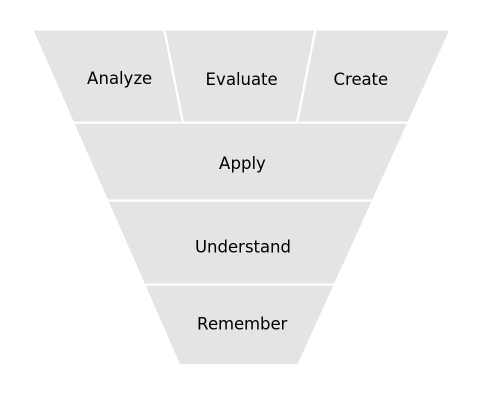
Bloom’s cognitive taxonomy offers a useful model for defining learning objectives. You start with the basic knowledge of the subject that requires some memorization: fundamental constants like the speed of light; fundamental concepts like conservation of mass and energy; and basic equations like Newton’s laws. On the second level, you use these basic facts and concepts to extrapolate and generalize with questions like: is the Earth an open or closed system with respect to mass and energy? And then we can start to apply our knowledge and understanding to problem solving: determine the average temperature of the Earth based on conservation of energy. Finally, at the highest level, we can analyse our models and evaluate their advantages and disadvantages.